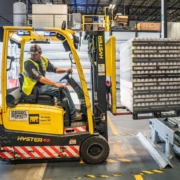Planning overtaken by reality
Planning has been overtaken by reality in today’s world. The pandemic, but also climate change, teaches us hard lessons.
Many an economist and every planner will have grabbed his head when the pandemic broke out. Any scenario could be trashed. And currently, every scenario is looking as dark as coffee. No one could have predicted what will happen today 3 months ago.
Traditional forecasts and methodologies provide little guidance. Consumer behavior has changed drastically. The lockdowns per country are different and the rules change every day. And the dramatic switch to E-Commerce by consumers may make sense in retrospect, but it is not predictable.
Uncertainty
What the coming months will look like is extremely uncertain. Where economists had expected a further rise in unemployment for the US, it has suddenly fallen considerably. What is clear is that now more than ever, end-to-end visibility is needed within supply chain management. A supply chain that links planning and execution in real time on a global scale.
If the current network platforms will not be able to seamlessly connect planning and implementation, demand-driven logistics will not be possible in the current context. The time horizon for planning has been severely shortened and is now punctuated with growing uncertainty. So you have less and less time to respond and you have correspondingly fewer choices.
Coordinated control of planning and execution is critical to logistics performance, whether it’s cross-docking to speed up retail replenishment and avoiding replenishment, or dynamically shipping last mile shipments to meet delivery requirements . Demand-driven capabilities, such as procrastination, need to be woven throughout the supply network.
The demand-driven manufacturer
From a shipper’s perspective, there are many variables that you think you have little or no control over, such as consumer buying patterns, fuel costs, supply disruptions, and capacity allocations. You can try to apply statistical prediction techniques or even machine learning, but these variables are always difficult to predict. No matter how low you can cause the prediction error, you will always have to respond to real-time issues.
One piece flow
Today, shippers must adopt a “few-and-often” approach based on collaboration and consolidation at the point of origin to move smaller quantities more frequently based on real-time demand updates. We must not forget that it was the dominant philosophies that upstream in the supply network realized the enforcement of minimum order quantities to increase efficiency.
Goldratt
In fact, it is possible to switch to smaller order quantities and actually reduce costs, as long as the real-time visibility of the network and collaboration reduces variability for all trading partners and eliminates the turnaround time of information from a demand perspective in all layers and echelons.
Sub-optimizing each layer in the supply network, separating layers with large inventory buffers, and the “throw it over the wall” mentality that creates the bullwhip effect upstream in the supply network must all be eliminated in order to order smaller quantities from suppliers. while the costs remain the same or even be reduced. Once all trading partners have a view of the big picture – that is, no one really gets paid until the end. Then a supply chain has the chance to really move with unexpected shocks, such as caused by a pandemic or climate change.









